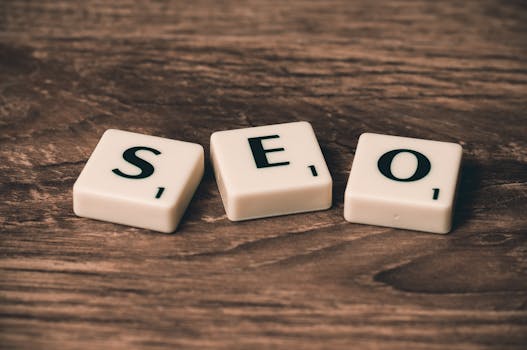Alt Text Background Image
Common Mistakes to Avoid with Alt Text
One of the biggest mistakes I see is keyword stuffing in alt text. While including relevant keywords can benefit SEO, overloading the alt text with them can come off as spammy and unhelpful. Always prioritize describing the image accurately over cramming in keywords.
Another common pitfall is writing generic descriptions. Terms like ‘image of’ or ‘picture of’ add no value to the alt text. Instead, provide context about the image itself. Let’s say you have a photo of a dog playing in a park; simply stating ‘dog’ does not capture the essence of the image.
Failing to use alt text at all is a critical oversight. It not only misses out on SEO opportunities but also alienates visually impaired users relying on screen readers. Every image needs thoughtful alt text, period.
Lengthy alt text is another mistake to watch out for. Keep it concise, ideally under 125 characters. If you find yourself writing more, consider breaking it into two sentences or rethinking what is essential to convey.
Lastly, ensure that alt text is relevant and matches the context of the page. If the image serves no purpose related to the content, it should not be included at all. Misleading alt text can hurt both user experience and SEO. Each image should enhance the understanding of your content.
Mastering Alt Text for SEO Success
Alt text is vital for both accessibility and SEO. This simple yet powerful element helps search engines understand your images, enhancing your chances of ranking higher in search results. Without effective alt text, you’re leaving significant SEO potential on the table.
When I started focusing on SEO, I quickly realized that many webmasters overlook this essential ingredient. They treat alt text as an afterthought, often just reiterating file names or, worse, leaving it blank. This lack of attention can severely hinder your site’s performance. Every image offers an opportunity to improve your site’s ranking, and alt text is the conduit.
Crafting high-quality alt text involves being descriptive while using relevant keywords naturally. Focus on describing the content of the image and its function. Avoid keyword stuffing, as it can lead to penalties rather than benefits. Remember, your alt text should be concise but informative, ideally around 125 characters.
When images are embedded in blogs, articles, or product descriptions, ensure that the alt text complements the surrounding content. This reinforces the relevance of your page, potentially boosting your SEO. Utilizing tools like Google’s Lighthouse or the WAVE evaluation tool can provide insights into how well you’re implementing alt text.
A common mistake is assuming that images without traffic won’t affect rankings. On the contrary, images contribute to overall engagement. They can increase dwell time and improve bounce rates, indirectly signaling to search engines that your content is valuable. Strategically using alt text can lead to enhanced visibility in image searches, driving additional organic traffic to your site.
Incorporating SEO strategies in a comprehensive manner is essential for long-term growth and visibility. Emphasizing alt text is a straightforward yet effective approach to boost your site’s credibility. It’s time to start viewing every image as an opportunity.
Best Practices for Writing Alt Text
Alt text is crucial for both accessibility and SEO. When you think about it, alt text serves two primary functions: it describes an image for visually impaired users and helps search engines understand the context of that image.
To start, keep your alt text concise yet descriptive. Aim for 125 characters or less. This is generally enough to convey the essential information without getting verbose.
Think about your audience. Write alt text you would find useful if you couldn’t see the image. Avoid vague terms like “image of” or “picture of,” as they add no value. Instead, describe the content of the image. For example, instead of saying “image of a dog,” say “brown Labrador running in a field.” This provides context.
Keyword usage is another critical aspect. Integrate relevant keywords naturally, but never force them in. The alt text should flow organically while helping with your SEO. However, don’t stuff your text with keywords — the goal is clarity, not confusion.
Also, consider context. The alt text you write should be specific to the content surrounding the image. If it’s a product image, mention details like color, size, or functionality.
Finally, avoid unnecessary repetition. If your site already contains the image’s context in nearby text, don’t reiterate it in the alt text. Be purposeful with each word you choose. Taking these best practices to heart will significantly enhance both your website’s accessibility and its search engine visibility.
Utilizing Alt Text for Better User Experience
Alt text is not just an accessory for images; it’s a fundamental component that can significantly enhance user experience. As someone who has spent years fine-tuning SEO strategies, I can firmly state that optimizing alt text serves dual purposes: improving accessibility for visually impaired users and giving search engines more context about your images.
Many website owners overlook alt text, treating it as an afterthought. This is a mistake. Effective alt text can improve your website’s SEO performance dramatically. It communicates the content of the image to search engines, allowing them to index it correctly. Search engines reward well-optimized content, which means your site could rank higher in image searches as a result.
Beyond SEO, think about the experience of your site visitors. If someone cannot view an image due to poor internet connectivity or uses a screen reader, descriptive alt text ensures they still understand the context of the visual. A well-crafted alt text helps create a more inclusive environment for all users. This consideration can enhance user satisfaction and engagement, translating into longer visit durations and lower bounce rates.
When crafting alt text, it’s essential to be specific and descriptive without being verbose. Avoid keyword stuffing; instead, focus on conveying the essential information succinctly. For example, instead of saying “Image of a dog,” try “Golden Retriever playing in the park.” This gives a clearer picture and adds value.
Moreover, maintaining a consistent strategy for alt text across your site streamlines your SEO efforts and reinforces your brand message. Use keywords strategically but prioritize clarity and accuracy in alt descriptions. Alt text may seem like a minor detail, but I assure you it plays a vital role in both user experience and SEO effectiveness.
Unhelpful: Image has no alt text, but is not set to decorative, so screen readers read the file name of the image instead. Background Images. Many programs skip …
… background images do not require alt text. If you use a background image that does add meaning to the page, it should be coded as a regular image with alt text.
Alternative Text for Web Images | Communication Standards | NREL
Dec 23, 2010 …Background image (lightened and enlarged duplication of the pie chart in the foreground): Alt = “Chart same as main chart.” Page 25. Social …
Social Security Administration Guide: Alternate text for images
/root/Image1/BackgroundImage/img/@alt. Licensee Portal. /root/Image2 … Text 988 – 24/7 Crisis & SupportText 988 Suicide & Crisis Lifeline. About Nevada
Alt Text vs. Decorative Images: What’s the Difference?
There’s a crucial distinction between alt text and decorative images, and understanding it is vital for maximizing your SEO efforts. Alt text is a descriptive text added to an image that conveys its meaning or function. It becomes essential for accessibility, allowing screen readers to describe images to visually impaired users. Moreover, search engines use alt text to comprehend the image content, which can benefit your site’s ranking. So, never underestimate the power of a well-crafted alt attribute! When writing alt text, be concise yet informative—aim for clarity. Include relevant keywords when appropriate but avoid keyword stuffing, as this can harm your SEO.
On the other hand, decorative images serve solely a visual purpose and don’t add informative value. For these types of images, the right practice involves using an empty alt attribute (alt=””). This informs search engines and assistive technologies that the image is non-essential, keeping your page clutter-free and focused on what’s important. Remember, using decorative images without proper attributes can lead to a drop in usability ratings and potentially impact your SEO negatively.
In summary, always think critically about the role of each image on your webpage. Alt text enriches your content’s context, while decorative images should be handled with care to prevent distractions. Prioritizing these details is crucial in crafting an SEO strategy that truly stands out.
Nov 18, 2010 … If you need to put an image in the page that has meaning then use an IMG element and give it an alternative text in the alt attribute. I agree …
For ambient images that are CSS, it is a courtesy to provide alternate text. When doing so, place image in its own empty <span> with an aria-label and role="img …
Alternate text for background images, alt text accessibility
Mar 1, 2021 …Site URL: https://www.bondprosper.com/london-property-market Title says it all, How do you add Image Alt Text to Section Backgrounds?
How do you add Image Alt Text to Section Backgrounds? – SEO …
May 20, 2022 … A Portfolio HTML5 responsive website template for your Portfolio website. Customize it with Webflow's web design tools and connect it to our …
What is the best way to handle alt text for a background image with a …
Answer. CSS background images should not have alternative text if the image is truly a background image. Decorative (i.e removing it from the page causes no …
How do I add alt text to background images? | Accessible Web
Dec 6, 2018 … I'm using lots of background images on a site because the image element is quite limited to use for functions such as filling the whole height …
Is it possible to add an alt tag to a background image? – Support …
Page Content. Concise Description; Empty ALT Text; Caption; Background Images; Avoid Text Box; Description vs. Title; Office 365 Desktop; Online …
Image ALT Text in Microsoft Office – Accessibility at Penn State
Generally, background images that are added to the page with CSS are decorative and don't require alternative text. However, linked background images and icons …
Accessible images: alternative text guidelines | ASU IT Accessibility
Importance of Alt Text in SEO
Alt text is crucial for both accessibility and SEO. As website owners, we often overlook how images contribute to our site’s optimization efforts. Search engines cannot interpret images the way humans do, so alt text plays a key role in conveying what an image represents.
By providing meaningful and descriptive alt text, we enhance our site’s visibility in search results. This simple practice allows search engines to index our images accurately, making them eligible to appear in image searches. The more images we can rank for, the greater the organic traffic potential.
Additionally, alt text improves user experience, especially for visually impaired users who rely on screen readers. Not only does this align with SEO best practices, but it also builds a more inclusive web. Companies with a strong commitment to accessibility can make a positive impact while boosting their online presence.
Moreover, optimizing alt text can reduce bounce rates. Users who encounter relevant and properly described images are more likely to engage with the content. Engagement is a key ranking factor, making it imperative to get alt text right.
Let’s remember that alt text isn’t just about filling a blank; it’s an opportunity to include relevant keywords that can further enhance our SEO strategy. Strategically incorporating keywords in alt text can subtly enhance our opportunity to rank for those terms. However, keyword stuffing should be avoided as it defeats the purpose and may frustrate users.
Ultimately, optimizing alt text is a simple yet effective method to enhance both usability and search engine visibility. It’s a win-win scenario that every site owner should embrace.
Integrating Alt Text into Your SEO Strategy
Integrating alt text into your SEO strategy is a game changer. It’s not just a checkbox for accessibility; it’s a powerful tool for improving your site’s visibility in search engines. Alt text serves as a description for images on your web pages, making it essential for both SEO and user experience.
Search engines struggle to interpret images, but they can read the alt text. Therefore, using descriptive, keyword-rich alt text is crucial for optimizing your images. Instead of just labeling an image as ‘image1.jpg,’ describe what’s actually in the picture. For example, use ‘beautiful sunset over the mountains’ instead of a vague label. This way, you’re engaging with search algorithms and enhancing the context for your audience.
But here’s the kicker: Alt text is particularly important for mobile users and those with disabilities. Many rely on screen readers to navigate your site. If your images lack descriptive alt text, you’re not only missing out on SEO benefits but also alienating a portion of your audience. Make sure to provide context that helps all users understand your content.
Moreover, alt text can improve your chances of appearing in image search results. Think of it as a chance to capture additional organic traffic. When your images attract clicks from search results, you drive more visitors to your site. This can lead to increased engagement and conversions, which are vital metrics for SEO success.
The key is to keep it relevant and concise. Generally, aim for under 125 characters. Use specific keywords where appropriate, but don’t compromise clarity for the sake of keyword stuffing. Being descriptive and accurate is what counts.
Incorporating alt text into your site shouldn’t feel like another task on your to-do list. Instead, it should be an integral part of your content creation process. Every image you add should have a purpose and a description that aligns with your overall SEO goals. Embracing this practice will put you ahead in both search results and user satisfaction.
Key factors in alt text optimization
Optimizing alt text is crucial for SEO and accessibility. Here are the essential elements to keep in mind.
- Clarity is essential: Your alt text should clearly describe the image. Use straightforward language that accurately conveys what is shown.
- Keep it concise: Aim for brevity while ensuring the description is informative. Typically, alt text should be under 125 characters for better display in screen readers.
- Use relevant keywords: Incorporate specific keywords that relate to your content but avoid keyword stuffing. This enhances SEO without compromising the description’s clarity.
- Context matters: Consider the context of the image within your content. The description should relate directly to the surrounding text, reinforcing the overall message.
- Be descriptive but appropriate: While details are important, ensure the description fits the tone and purpose of your website. Avoid unnecessary embellishments.
- Avoid redundancy: If the image is already described in nearby text, keep the alt text minimal. This prevents redundancy and enriches content flow.
- Test for accessibility: Ensure your alt text is effective by testing it with screen readers. This enhances user experience for those relying on assistive technologies.
Checklist for Crafting Effective Alt Text
Alt text plays a crucial role in improving accessibility and SEO. Ensuring it’s done right can lead to better user experience and higher search rankings. Here’s what I consider essential when writing alt text.
- Be Descriptive and Specific: Clearly describe the image, focusing on the most relevant details. A vague description is of no use to anyone.
- Keep It Concise: Aim for brevity while still capturing the essence of the image. Overly lengthy alt text can dilute its impact.
- Use Keywords Naturally: Include relevant keywords organically, but don’t force them in. Authenticity in language is key.
- Avoid Redundancy: Don’t start with phrases like ‘Image of…’ or ‘Picture of…’. You’re already marking it as an image!
- Consider Context: Make sure the alt text relates to the surrounding content. Contextual relevance enhances both accessibility and SEO.
- Focus on Function: If the image has a specific function (like a button or link), describe its purpose rather than what it merely looks like.
- Regularly Review and Update: As the content evolves, alt text should be revisited and revised to ensure ongoing relevance and accuracy.
Sep 15, 2022 … No alt text provided for this image. Join the Teams meeting and … I start by adding an image as background. No alt text provided for …
May 10, 2020 … No alt text provided for this image. A younger Madhav would write the alt text as: <img src=”background–image.jpg” alt=”Background image” />.
How Alt Text Improves Accessibility
Alt text is a game changer in making the web more accessible. Whenever I evaluate a website’s SEO strategies, I can’t help but emphasize how crucial alt text is for individuals with visual impairments. By providing a description of images, alt text ensures that screen readers can convey the visual content to users who cannot see it. This simple practice not only enriches the user experience but also boosts your site’s SEO performance.
Implementing effective alt text directly correlates to how search engines understand the content of your images. Search engines can’t “see” images; they rely on text to make sense of the visual data. Including relevant keywords in alt attributes can help your images rank better in search results, making your website more appealing to potential visitors.
From my perspective, alt text goes beyond compliance with accessibility standards. It reflects a commitment to inclusivity. By ensuring that everyone can access your content, you open the door to a broader audience. This not only improves engagement but can also lead to increased shares and backlinks as your reach expands.
Moreover, missed opportunities arise when alt text is overlooked. Imagine an image that perfectly encapsulates a blog post but lacks a description—what happens? It’s left in the dark, unseen and unutilized. Investing time in crafting thoughtful alt text can bring your content to life for those who need it most. It’s about creating an equitable digital environment. That’s not only good for users but also beneficial for your search visibility.
Alt text should be concise yet descriptive. Avoid keyword stuffing, which can harm your SEO rather than help. Find that balance where your alt text is informative and user-friendly. Ultimately, alt text is a crucial component in the quest for web accessibility and SEO success. The two go hand in hand, strengthening your online presence and ensuring that your content resonates with everyone.
Tools for Checking Alt Text Implementation
Understanding and implementing alt text correctly is crucial for any SEO strategy. Alt text not only helps visually impaired users but also boosts your website’s search visibility. Here’s a look at some tools that can help you verify your alt text implementation.
First off, I recommend using Google’s Lighthouse. This powerful auditing tool, integrated into Chrome DevTools, checks the accessibility of your website. Simply open DevTools, run Lighthouse, and you’ll get a report that includes suggestions on alt text. It’s an invaluable resource for real-time checks.
Another fantastic option is Screaming Frog SEO Spider. This desktop program crawls your website, similar to Googlebot, and provides a detailed analysis of all the elements on your pages, including alt text. You can quickly isolate images missing alt attributes, which makes it easier to optimize your content efficiently.
WAVE Web Accessibility Evaluation Tool is also worth mentioning. It offers a user-friendly interface where you can input your URL. WAVE checks the accessibility of your site, highlighting images without alt text and providing a visual representation of needed changes.
If you’re looking for a plugin, consider Yoast SEO for WordPress. This handy tool not only helps you optimize your content for SEO but also prompts you to add alt text when uploading images. It’s perfect for those who manage their websites without much technical knowledge.
Finally, Sitechecker offers a comprehensive SEO toolkit that includes alt text checks. Its crawler reveals images that lack descriptive text, allowing you to resolve the issues quickly.
By using these tools, you can ensure that your website is not only more accessible but also optimized to rank higher in search engine results. Remember, effective alt text is an essential part of your SEO efforts, and these tools make it easier to implement and maintain.
Impact of alt text on image search rankings
Exploring the crucial role of alt text in enhancing image search rankings and boosting website visibility.
- Alt text is essential for image optimization. It provides context to search engines, ensuring they understand what the image is about. Without a proper description, the search engines might miss the chance to rank your images higher.
- Image search ranking plays a significant role in driving traffic. If you want your visual content to be found, alt text must be a priority. It helps images appear in search results, directly influencing the organic traffic to your site.
- A descriptive alt text enhances accessibility. By accurately describing visuals, you not only appeal to search engines but also to users relying on screen readers. This dual purpose boosts your site’s overall user experience and can improve rankings.
- Including keywords in alt text can improve visibility. Thoughtfully integrating relevant keywords enhances searchability without resorting to keyword stuffing. Be careful and ensure it flows naturally—search engines penalize poor practices.
- Neglecting alt text can hinder your SEO efforts. Images are a significant part of web content, and failing to optimize them is a missed opportunity. If you want every part of your content to shine, pay attention to those alt attributes.
Real-Life Examples of Effective Alt Text
Alt text is crucial for accessibility and SEO. It’s an effective way to provide context for images and enhance your website’s user experience. Let me share some real-life examples that illustrate the power of effective alt text.
Take the website of a travel agency, for instance. They feature stunning images of exotic locations. One image shows a picturesque beach at sunset. The alt text reads: “Sunset over white sandy beach in Maldives, with palm trees silhouetted against the vibrant sky.” This description is beneficial not only for visually impaired users but also for SEO, as it captures relevant keywords for search engines.
Another example comes from an e-commerce site specializing in outdoor gear. Instead of using generic alt text like “hiking boots,” they utilize a more descriptive version: “Men’s waterproof hiking boots with rugged soles and breathable material, perfect for challenging trails.” This approach provides essential details and improves search visibility.
Consider a nonprofit organization focused on wildlife conservation. An image of a rescued elephant is accompanied by the alt text: “Rescued African elephant at the sanctuary, recovering from poaching injuries, playing with enrichment toys.” This not only describes the image accurately but also engages the audience emotionally while highlighting the organization’s mission.
In all these examples, effective alt text enriches user experience and supports SEO strategies. When crafted thoughtfully, it can lead to more organic traffic and a deeper connection with your audience. Good alt text is like a magnet for both users and search engines—don’t overlook its potential!
Monitoring the Impact of Alt Text on SEO
Alt text is an essential part of web optimization that is often overlooked. It’s not just about making images accessible; it’s a powerful tool for SEO. By adding descriptive alt text to images, you’re providing search engines with context about what the image represents. This can significantly enhance your website’s searchability.
Monitoring the impact of your alt text on SEO involves several straightforward techniques. First, keep track of your website’s rankings and organic search traffic before and after implementing alt text on your images. If you’re using tools like Google Analytics or SEMrush, create specific reports tracking changes in traffic from image searches. You’ll start to see whether your optimization efforts are paying off.
Another effective way to assess how well your alt text is working is to analyze the click-through rates (CTR) from image search results. High CTR indicates that your alt text is resonating with users, encouraging them to click your images in search results. If you notice low CTR, it might be time to reconsider your alt text strategy, ensuring it’s both descriptive and engaging.
Additionally, employ A/B testing. You can create two versions of alt text for the same image and monitor which one performs better in search results. This method helps refine your approach and maximizes your chances of drawing organic traffic.
Always remember that alt text should serve a dual purpose: accessibility for visually impaired users and SEO enhancements for your site. Stay vigilant and make adjustments based on the data you gather, keeping your website optimized for search engines and users alike.
What should be included in alt text?
Alt text, or alternative text, serves as a crucial component of web accessibility and SEO. Its primary purpose is to describe images to users who cannot see them, including those using screen readers. An effective alt text description should be concise but informative. Include relevant keywords naturally, as this can enhance search engine visibility while still providing context for users. Favor clarity over creativity; your goal is to depict what the image conveys without unnecessary flair. Avoid keyword stuffing; this damages readability and user experience. Instead, focus on delivering straightforward descriptions. If the image is purely decorative, a simple empty alt attribute (alt=””) suffices. Remember, alt text is not just a box to check—it’s an opportunity to engage all users and improve your site’s SEO.
How does alt text affect SEO rankings?
Alt text is crucial for optimizing images for SEO. When search engines crawl your site, they can’t ‘see’ images; they rely on the alt text to understand what the image represents. This text acts as a descriptor and can impact how your page ranks in search results.
Effective alt text improves accessibility, making your website more user-friendly. By ensuring that visually impaired users can understand your content, you’re not only serving an important audience but also demonstrating to search engines that you care about user experience, which can positively influence your rankings.
Additionally, well-crafted alt text can help you rank in image search results. If your images appear in search results, they can drive significant organic traffic to your site. Utilizing relevant keywords in your alt text, without keyword stuffing, can send strong signals to search engines about your content’s relevance.
In short, if you’re serious about your SEO efforts, investing time in alt text is non-negotiable. Prioritize quality descriptors for your images, and watch your SEO rankings benefit from this often-overlooked element.
Can I use the same alt text for multiple images?
No, you should avoid using the same alt text for multiple images. Alt text serves a critical function in accessibility and SEO. It describes each image’s unique content and context, allowing screen readers to communicate meaning to visually impaired users. If you recycle alt text, you dilute its effectiveness and confuse your audience.
Every image should have descriptive and specific alt text that captures what it conveys. This uniqueness not only improves user experience but also enhances the image’s SEO potential. Search engines rely on this text to understand the content of images, so distinct descriptions are vital.
Moreover, duplicate alt text fails to offer value to your users and can even harm your ranking. Invest the effort to create tailored alt text for each image, as it’s a crucial part of optimizing your site effectively.
Is alt text necessary for background images?
Yes, alt text should be considered necessary for background images. While many might think it’s sufficient to ignore alt text for decorative elements, I firmly believe that even background images deserve a brief description. First, accessibility is crucial. Users with screen readers rely on alt text to understand content, including what’s visually present but not directly described in HTML. Ignoring alt text because an image is in the background can create confusion and reduce the overall user experience.
Furthermore, search engines appreciate when pages include relevant, descriptive alt text. This can contribute to improving SEO rankings, making it more likely for your site to be found in search results. The subtle details you may overlook can offer significant advantages. Always remember, alt text for backgrounds can be brief, but having it is better than having none at all. Enhance both accessibility and potential search visibility by embracing this practice.
What are common mistakes in writing alt text?
One of the biggest mistakes I encounter is using vague or generic descriptions. Alt text should provide specific information about the image, helping visually impaired users grasp its context. Another common error is writing long alt text. Keep it short and to the point—about 125 characters is ideal. It’s surprising how often I see people describing the image instead of its function. For example, instead of saying ‘a red apple on a table,’ say ‘red apple for a health blog post.’ Function needs to be clear.
Moreover, I often notice people neglecting to include relevant keywords, which is a missed opportunity for SEO. However, don’t stuff keywords—focus on accuracy and relevance. Lastly, some writers forget to use alt text altogether, which is an oversight that can hurt accessibility. Every image should have descriptive alt text.
How do I test the effectiveness of my alt text?
Testing the effectiveness of your alt text is crucial for optimizing your images and enhancing accessibility. Start by using tools like Google Search Console to track how your images are indexed and whether they’re appearing in search results. This can provide insight into how well your alt text is performing. Additionally, consider conducting user testing with individuals who rely on screen readers; their feedback is invaluable. You want to ensure that the alt text accurately describes the image content while being concise. Monitor your website’s engagement metrics as well—if your images are driving traffic, it’s likely you’ve nailed the alt text part. A/B testing can also be effective. Try different formulations of alt text to see which versions yield better performance on SERPs or user interaction. Use a combination of analytics, user feedback, and A/B testing to refine your approach continuously.
Alt text is essential for image SEO. It enhances visibility in search results and improves accessibility for users. Without it, you’re missing out on a significant opportunity to boost your site’s performance.
Every website needs proper alt text for images. This simple practice not only boosts accessibility for users with disabilities but also improves search engine optimization. Alt text helps search engines understand your content, driving more organic traffic. I can’t emphasize this enough—don’t overlook it!
Clear and descriptive alt text is essential for user engagement. It enhances accessibility and ensures that all users, including those using screen readers, understand your content. This focus not only improves the user experience but also boosts SEO performance. Don’t underestimate the power of effective alt text!
**Keyword stuffing in alt text is a mistake that can hurt your SEO.** Instead, focus on providing clear, descriptive text that accurately reflects the image. This approach enhances accessibility and boosts your ranking without triggering search engine penalties.
Functional images serve a purpose, enhancing user experience or conveying information. Decorative images, however, are purely aesthetic and can detract from SEO efforts if not used wisely. Prioritize functional visuals to optimize your site’s performance effectively.
**I strongly believe that regularly auditing your alt text is crucial for SEO success.** It’s an easy way to enhance accessibility and improve search visibility. **Don’t overlook this essential element; it can significantly impact your site’s performance.**
Using tools to ensure alt text compliance across your site is essential. It boosts accessibility and search engine ranking. I can’t stress this enough—neglecting alt text means missing out on potential traffic and engagement.
Studying effective alt text examples transformed my approach. It’s clear that seeing real-world applications enhances understanding. Incorporating these insights can significantly boost SEO visibility. Don’t underestimate the power of learning through examples!

Albert Mora is an internationally renowned expert in SEO and online marketing, whose visionary leadership has been instrumental in positioning Seolution as a leader in the industry.










